Immerse yourself into the chronicled journey of Leonardo da Vinci, one of the world’s most celebrated polymaths and artists. Born out of a humble setting in Vinci, Italy, da Vinci became a universally acclaimed artist and a leading figure in many disciplines.
Develop an understanding of the societal and cultural influences that shaped da Vinci’s vision, his tireless pursuit of knowledge, and his initiation into the art world. Delve into the technical brilliance that sets da Vinci apart, explore the intricacies and the meticulous planning that went into his art, and discover the masterpieces that continue to enamor the world so many centuries later.
Table of Contents
- Leonardo da Vinci: His Life and Times
- Leonardo da Vinci’s Artistic Methods and Techniques
- Leonardo da Vinci’s Masterpieces
- Da Vinci’s Contribution to Science and Discovery
- Related Questions
Leonardo da Vinci: His Life and Times
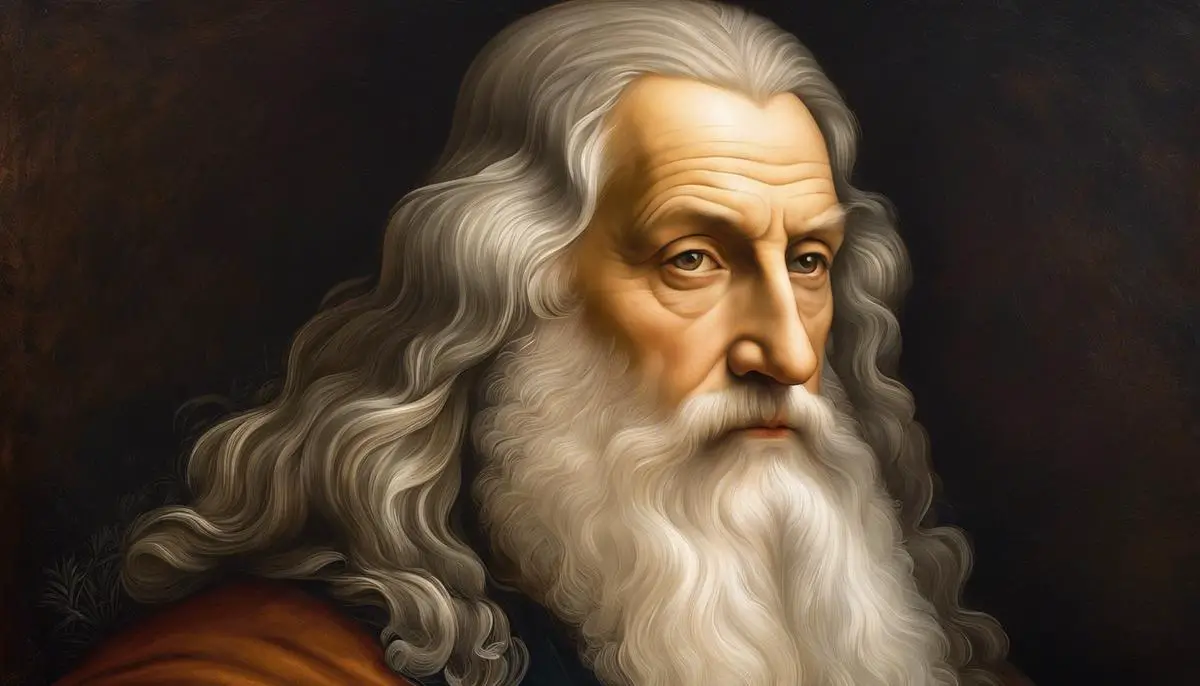
The realm of art forms a vibrant tapestry of human expression, with each artist weaving their unique threads of creativity through the ebb and flow of time. However, among these creatives, none shines brighter than the stunning brilliance of Leonardo da Vinci, a polymath artist who truly redefined the concept of art.
Leonardo da Vinci, born in the small town of Vinci in Italy, enveloped art, science, and invention into his masterpieces, transcending the conventional boundaries of artistic expression. Shown the ropes in the workshop of renowned artist Andrea del Verrocchio, da Vinci’s latent skills were honed and polished into a fine blend.
His paintings, filled with life and dynamism, marveled the eyes and senses with their exquisite blend of color and emotion. Architecture, sculpture, science, and anatomy found a common, harmonious ground in his masterpieces. As an artist, his creations stemmed from a deeply ingrained curiosity and keen observation of the world around him.
However, Leonardo da Vinci’s genius was not confined to the canvas. His contribution to art history extends far beyond his masterpieces. His innovative techniques revolutionized painting and gave a fresh lens to view and comprehend the world.
His skillful interplay of light and shade, known as ‘chiaroscuro,’ imparted a rounded, tangible quality to his figures. He implemented ‘sfumato,’ a refined technique rendering smoky atmospheres and soft transitions between colors, fostering a sense of depth and volume that, until then, was an untouched frontier in the art world.
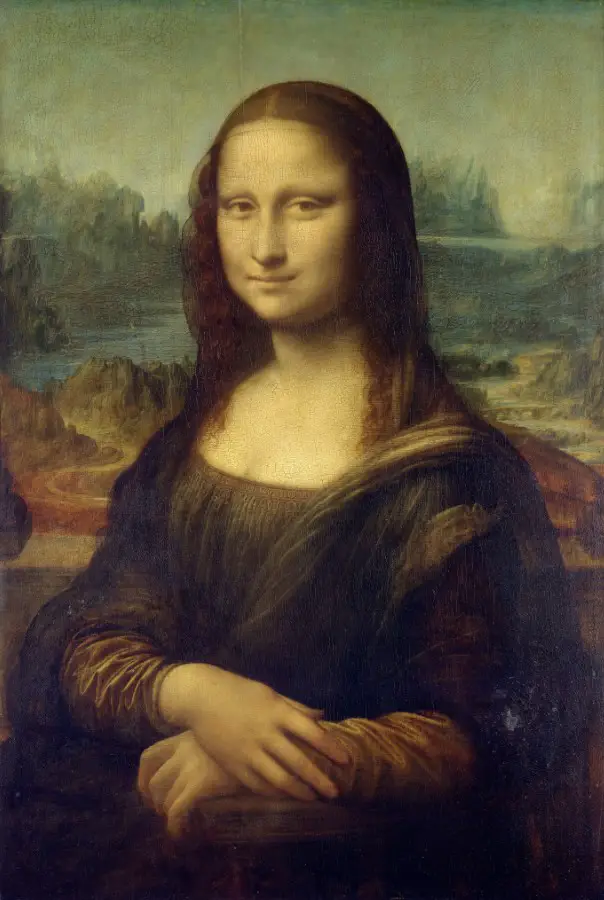
Perhaps the most iconic of da Vinci’s creations is the ‘Mona Lisa,’ which stands unrivaled in its enigmatic charm and sheer magnetism. Her mysterious smile, the elusive misty landscape, and the calmness she exudes continue to captivate millions, maintaining the aura of intrigue around the masterpiece.

‘The Last Supper,’ another monumental work, showcases Leonardo’s ability to imbue a scene with dramatic tension and intricate detail. His understanding of perspective and anatomy, accrued from exhaustive sketching and studying, is reflected in the lifelike figures and realistic settings.
Another facet of Leonardo da Vinci’s unprecedented impact lies in his exploration of various themes and subjects. He was a true Renaissance artist whose pursuit of knowledge did not recognize boundaries. Every venture was supplemented with his passion for in-depth observation and unraveling the secrets of the world, which greatly expanded the potential and reach of art.
His thirst for knowledge, coupled with his innovative techniques, transformed Leonardo da Vinci into a figure who didn’t just conform to the artistic standards of his time but changed them entirely. His monumental contributions still echo in art, establishing him as an ever-glowing beacon lighting the path for artists across generations.
His legacy, woven into the annals of art history, ensures his indelible imprint on the canvas of time. His works inspire, motivate, and serve as a testament to the boundless potential of human creativity and artistic brilliance.
In essence, Leonardo da Vinci became the symphony of art, with every stroke of brush resonating with the timeless harmony of his genius and passion. Painting, for him, was not just an act of throwing colors onto a canvas—it was bringing an idea to life, revealing shades of the world previously unseen.
His life reveals a simple truth: Art is not just about creation but also about discovery. A discovery that helps us understand our world better see it through different lenses and appreciate the inherent beauty it holds. Therefore, while centuries may have passed since Leonardo da Vinci painted his masterpieces, his influence in art is timeless and everlasting.
Leonardo da Vinci’s Artistic Methods and Techniques
The Genius of Leonardo da Vinci: Unveiling The Master’s Tools
Leonardo da Vinci is arguably one of history’s most iconic artists, an unequivocal genius who utilized exquisite techniques and uncharted methodologies to craft his masterpieces. To truly understand these works, one must delve fearlessly into da Vinci’s unique techniques, from his pioneering use of chiaroscuro to his pioneering play with perspective.
The brilliance of his works did not come about by a sheer stroke of artistic flair – far from it. First and foremost, Da Vinci’s deep understanding of the human anatomy enhanced the realism of his paintings.
His anatomical drawings, striking in their detail, accuracy, and complexity, are a testament to his artistic brilliance and scientific curiosity. His intimate comprehension of muscle structure, skeletal form, and the intricate plays of light and shadow on the human form translated onto his canvases, imbuing a lifelike veracity far ahead of his time.
Another remarkable technique employed by da Vinci was chiaroscuro, the subtle play between contrasting shades. Da Vinci exploited this revolutionary technique to impart three-dimensional depth to his subjects. Backed by an adept hand and an exacting eye for detail, da Vinci controlled the tone, adding drama and depth to paintings previously confined to two dimensions.
One cannot neglect da Vinci’s masterful use of sfumato – a technique that involves the delicate blending of colors – to mimic the subtle shifts in tone we perceive in reality. His skillful manipulation of this method is extraordinary, transforming stark lines into soft transitions and contributing to the overall realistic effect of his paintings.
Da Vinci was also notoriously known for his patience. Unlike many of his contemporaries, Leonardo was in no rush to finish his work. He took his time, often leaving artworks incomplete, only to return to them years later. This outstanding commitment to perfection is a testament to his love for art and his steadfast belief in detail, which significantly contributed to the depth of his pieces.
The artist utilized atmospheric perspective brilliantly. He understood how colors and objects appear less distinct as they recede into the distance, creating a sense of depth and spatial complexity. This understanding, coupled with his meticulous approach to capturing the minutiae of the natural world, helped push the boundaries of what was believed to be achievable in visual art.

Above all, Leonardo da Vinci was a master of capturing emotion, a detail that perhaps sets him apart the most. He understood that expression could convey a spectrum of human emotions, encapsulating a narrative far beyond what was immediately apparent. Through subtly exaggerated facial expressions and body language, da Vinci imbued his canvas with life, each figure almost palpable in their emotional turmoil.
The artworks of Leonardo da Vinci remain a testament to his genius, unquenchable curiosity, and enduring influence over the world of art and beyond. In their essence, they encapsulate the artist’s love for art, constant pursuit of perfection, and relentless pursuit of knowledge – hallmarks of a true Renaissance master.
Through his innovative methodologies and techniques, even centuries later, his artworks still marvel, inspire, and captivate, reaching out from the annals of history to enlighten and influence artists of every generation.
Leonardo da Vinci’s Masterpieces
Indeed, more celebrated works of Leonardo da Vinci exist beyond the universally known “Mona Lisa” and “The Last Supper.” With their fusion of art and science, these masterpieces are only a fraction of what da Vinci’s creative consciousness brought forth.
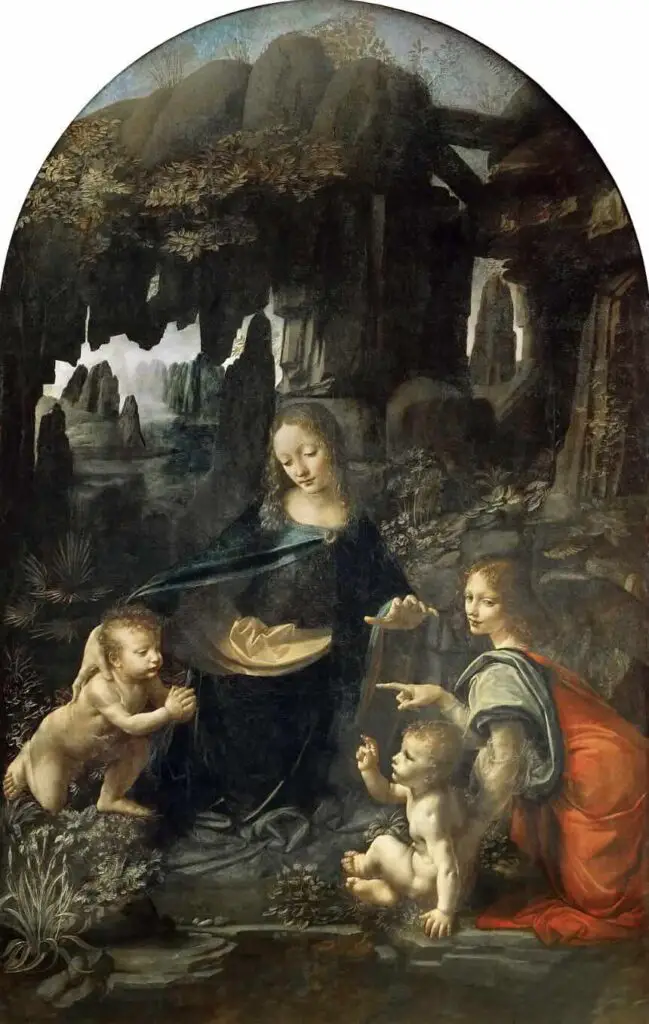
One notable creation is the “Virgin of the Rocks,” characterized by its uncanny depth and subtlety. The harmonious grouping of the figures in this work reveals da Vinci’s profound understanding of human form and anatomy.
With a captivating backdrop of a rock-filled landscape, the painting exemplifies da Vinci’s penchant for drawing elements from nature, symbolizing his deeply ingrained curiosity for the natural world. Here, the embodiment of atmospheric perspective through a smoky mist yields an illusion of depth and complexity, capturing the awe-inspiring mystery of nature.
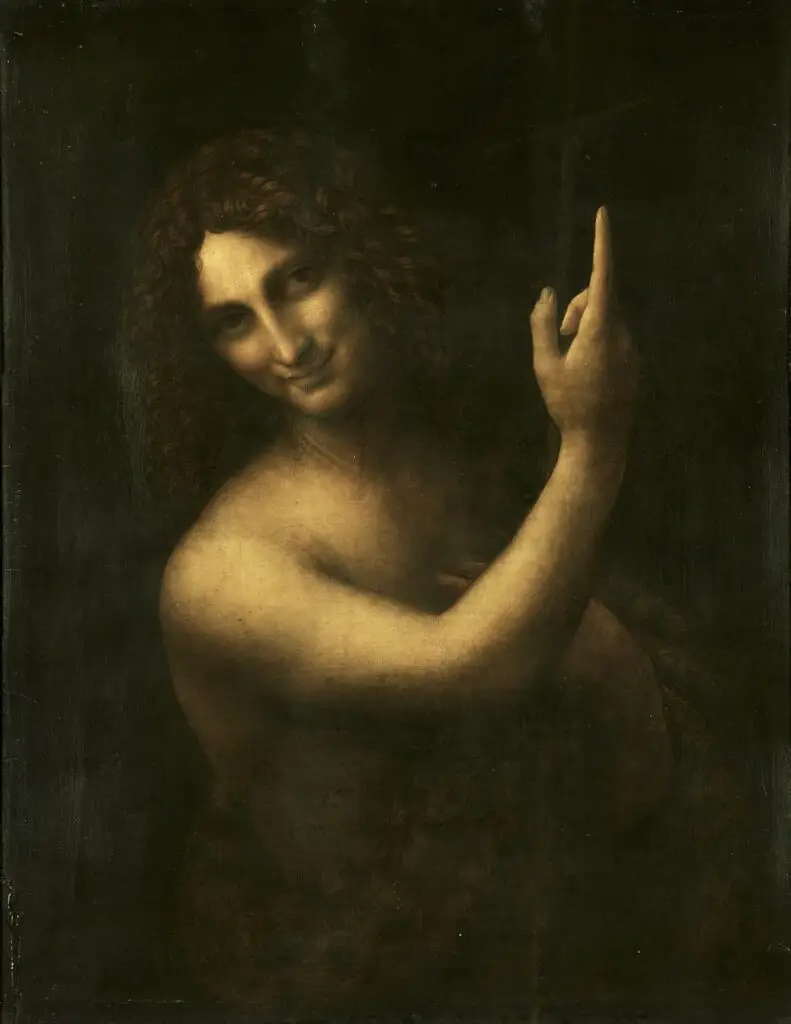
“Saint John the Baptist” is a testament to da Vinci’s ability to elicit emotion through portraiture. The figure’s enigmatic smile—reminiscent of the Mona Lisa’s—is paired with an expressive gaze and intricate detailing. This beguiling representation submerges viewers in an emotional whirlpool, showcasing da Vinci’s unparalleled skill in capturing the human psyche.

Da Vinci’s “Vitruvian Man,” a sphere-and-square composition human figure sketch, further flaunts his multidimensional mastery. Seamlessly merging art and scientific knowledge, this sketch unravels the depths of human proportions with exquisite precision, giving an interior glimpse into his obsession with perfection and relentless pursuit of knowledge.
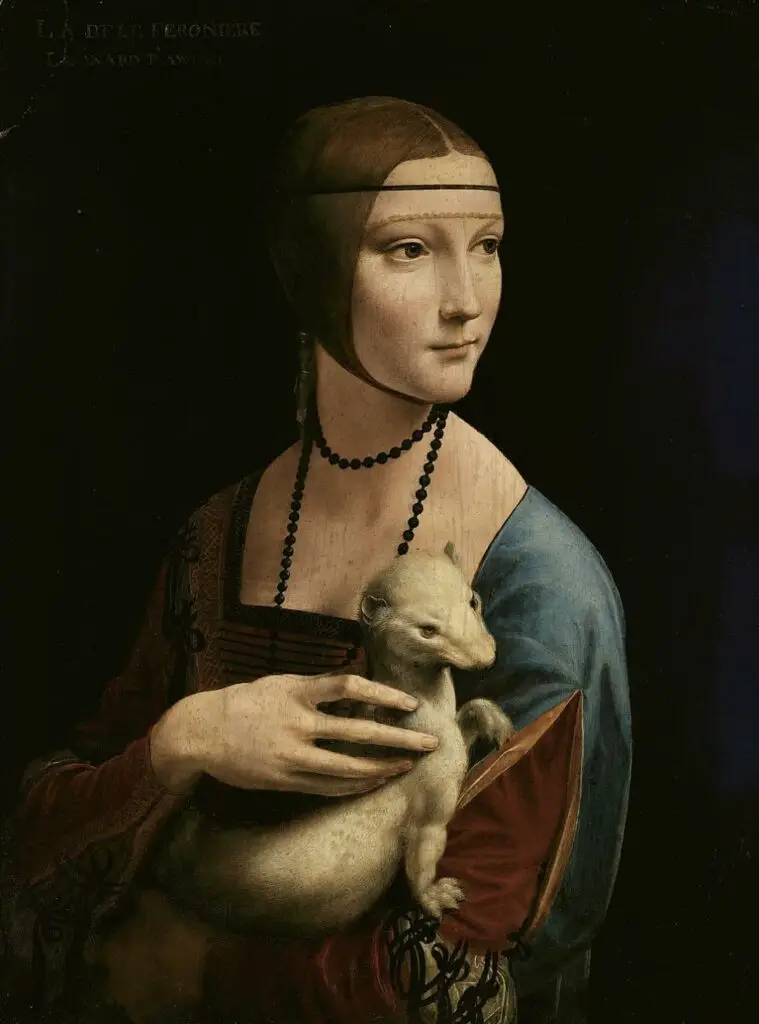
The piece “Lady with an Ermine” is where da Vinci’s understanding of chiaroscuro—light and shade—lends the work an extraordinary realism, softening the contours and giving the depicted personality an almost 3D life. The lady’s ermine, too, flaunts astonishing detail, with the divergent textures of its fur and the subject’s clothing adding depth to the composition.
While the everlasting influence of da Vinci remains globe-spanning, it’s crucial to delve beyond the da Vinci clichés, discovering an expanse of knowledge and masterpieces that reside in the lesser-known territories of his oeuvre.
Each representing a different aspect of his multi-faceted genius, Leonardo da Vinci’s lesser-celebrated works challenge our comprehension, enticing us to delve deeper into the labyrinth of his artistic realm.
No other artist has left such an enduring mark on the art world, etching a lasting legacy in the annals of art history. Remember, the scope of one’s understanding of da Vinci’s works lies not in memorability but in discovering and appreciating the prodigious extent of his genius.
Da Vinci’s Contribution to Science and Discovery
Captivating a gaze beyond the painting canvas, Leonardo da Vinci diverged from solely focusing on the aesthetics of artworks. His genius in combining his obsessions with science’s realities and laws, with his unparalleled artistic flair, distinguishes him as an iconic figure transcending time and place.
A noteworthy example of this dovetailing of art and science is evident in da Vinci’s scientific investigations, which offer an intimate insight into how such observations have impacted his art.
His meticulous scrutiny of natural phenomena, light reflections, fluid mechanics, and botanical studies demonstrate how science became integral to his artistic process. This scientific knowledge elevated the authenticity and precision of his compositions, a trait signature to many of his iconic works such as ‘The Virgin of the Rocks.’
The intimate bond da Vinci formed with the sciences was most strikingly apparent in his manifestation of human anatomy. His poignant fascination with the human body compelled him to spend hours studying corpse dissections, understanding the distinct musculature and skeletal anatomy, and embedding such findings into his art.
His work, ‘The Vitruvian Man,’ beautifully renders this art–science amalgamation, where the perfect symmetries of the human body are laid out with mathematical precision.
One cannot forget the innovations in da Vinci’s chosen medium that science afforded him. His incredible knowledge across multiple scientific fields, including chemistry, made him a pioneering force in art forms and techniques. He pushed the boundaries of traditional painting mediums, working tirelessly to innovate oil painting and create new pigments that translated his visions into tangible art.
In this light, chiaroscuro, a technique relying on sharp contrasts between light and dark, became a favored tool for da Vinci, as seen in works like ‘Lady with an Ermine.’ Further, atmospheric perspective, an approach reliant on a scientific understanding of light diffusion and scattering, brought heightened realism and depth to his compositions.
Moreover, da Vinci’s exhaustive exploration into optics allowed him to meticulously experiment with perception, profoundly impacting how his artworks were perceived. This is amply evidenced by his use of sfumato in ‘Annunciation,’ a fine testament to da Vinci’s ability to exploit optical illusions and light diffraction to create an ethereal, dream-like quality in his paintings.
Exemplifying the versatility of his mind, Leonardo da Vinci weaved in scientific theories, universal laws, abstract concepts of nature, anatomy, and botany seamlessly into the fabric of his artistic creations. The result was a repertoire of artworks that are pleasing to the eye and intriguing puzzles that invite observers to delve deeper into the labyrinth of da Vinci’s genius.
Relishing in his legacy, it becomes evident that the amalgamation of art and science was the lifeblood of da Vinci’s work, acting as an omnipresent force giving life to his timeless masterpieces. Thus, his ability to bridge this gap plays a monumental role in cementing his position as a paragon of the Renaissance, whose works continue to captivate hearts and minds centuries later.
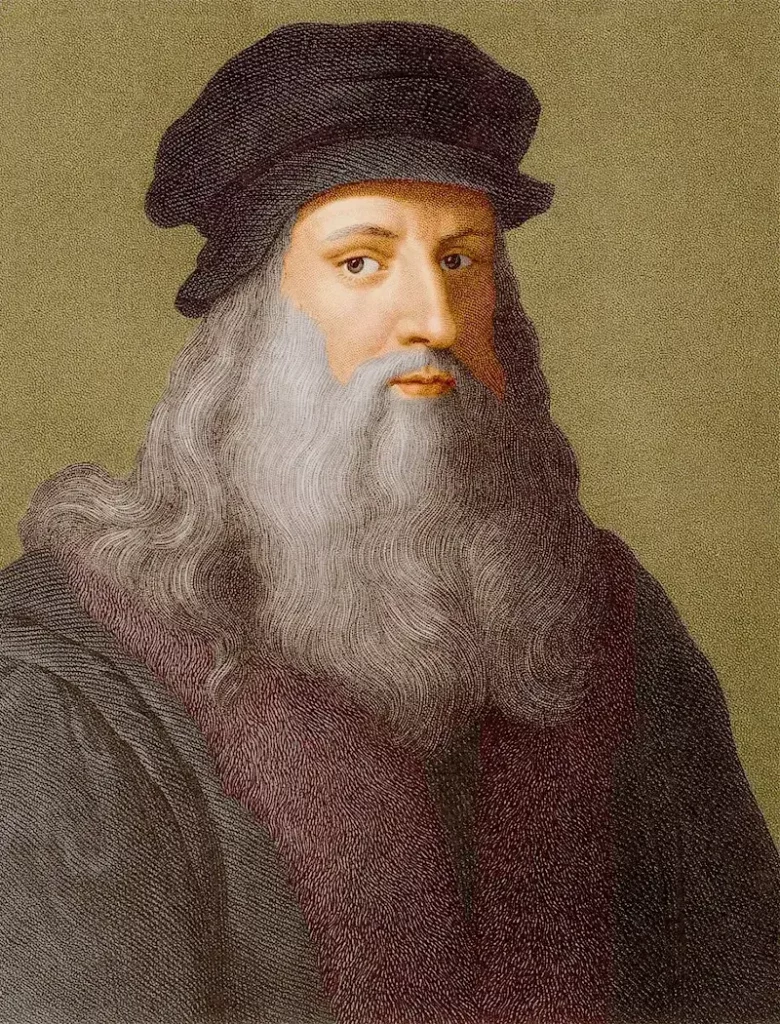
Whether breathing life into his sketches with a deep exploration of human anatomy, bending the laws of nature with his audacious scientific intrigue, or enrapturing the modern world with his universally acclaimed masterpieces, da Vinci continues to fascinate and inspire us. His profound impact on the art world, science, and beyond reaffirms that he was indeed a man far ahead of his era.
From his inquisitive mind came an array of discoveries and inventions that were precursors to monumental technologies, combining art and science beautifully. More than just an artist, Leonardo da Vinci was a genius, a savant who bridged the gap between beauty and cognition. Through learning about his journey, we gain a deepened appreciation for his timeless legacy and a renewed fascination for the boundless capabilities of human endeavor.
Anita Louise Art is dedicated to art education, great artists, and inspiring others to find and create their art. We love art that uplifts and inspires. #ArtToMakeYouSmile! #ArtToMakeYouHappy!
If you are interested to see any of my art, you can find out more by clicking here. If you are interested in what inspires me and my paintings, you can discover more by clicking here.
We have a free newsletter and would love you to be part of our community; you can subscribe to the newsletter by clicking here. If you have any questions, I would be happy to talk to you at any time. You can reach me, Anita, by clicking here.
Subscribe to our Anita Louise Art YouTube Channel filled with great videos and information by clicking here.
Join us for our podcast “5 Minutes With Art.” Spend just 5 minutes a week with us to discover and learn about great art and artists. You can find out more about our podcast by clicking here.
Related Questions
Guide To The Last Supper Picture By Leonardo da Vinci
Leonardo Da Vinci’s Last Supper painting is located in Milan, Italy. Even though the painting was so badly damaged, it has been restored and is still considered one of the greatest Renaissance masterpieces ever created. The Last Supper depicts the emotions of the apostles as Christ told them that one of them was going to betray them. The painting is filled with symbolism and emotion.
By clicking here, you can learn more by reading Guide To The Last Supper Picture By Leonardo da Vinci.
Discovering Van Gogh: Van Gogh Museum Amsterdam
The Van Gogh Museum in Amsterdam is a world-renowned cultural institution that attracts art lovers and enthusiasts from around the globe. It is home to the most extensive collection of works by the legendary Dutch artist Vincent van Gogh. Visitors can explore Van Gogh’s fascinating life and career through a diverse collection of over 200 paintings, 500 drawings, and 700 letters. The museum constantly has new and exciting collections that also reflect upon the work and life of Vincent Van Gogh.
By clicking here, you can learn more by reading Discovering Van Gogh: Van Gogh Museum Amsterdam.
Ukiyo-e Vs. E-Ukiyo: An Important Part Of Art & Art History
Two forms of Japanese art continue to influence Western artists: the Ukiyo-e art and E-Ukiyo. Both of these are unique Japanese art forms. The Ukiyo-e is the art form that emerged in the 17th century. The E-Ukiyo is a more modern art form associated with digital art.
By clicking here, you can learn more by reading Ukiyo-e Vs. E-Ukiyo: An Important Part Of Art & Art History.

